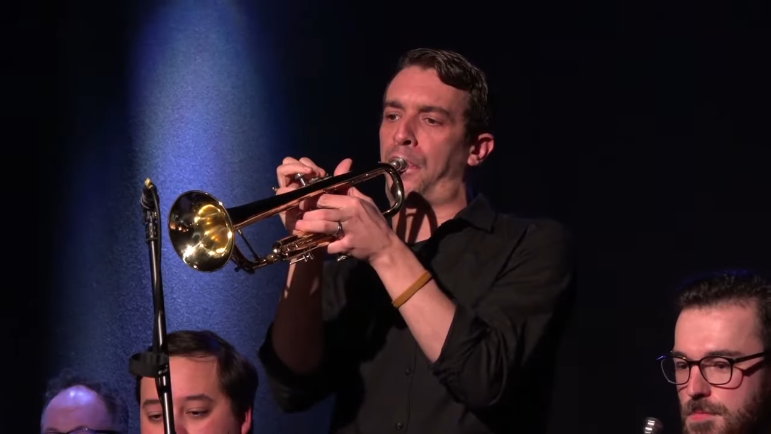A Ghost In The Room
Reflecting on past experiences is a powerful way to learn and grow in both our personal and professional lives. In this blog post, I will share one of the most challenging experiences from my work as a streaming engineer for the Sonic Arts Research Centre (SARC) video team. Using Gibb’s Reflective Cycle and the STAR method, I will both analyze and share insight on how I addressed this challenge.
Description
As a member of the Sonic Arts Research Centre (SARC) video team, I am responsible for ensuring that live streams commence smoothly and without any technical difficulties. Many of these livestreams broadcast local and international artists performing their original music. The music can range dramatically in styles from the experimental electroacoustic music all the way to jazz and spoken word. One of the key pieces of software that me and my colleges rely on is a phone application called Unity, more commonly referred to as “Comms”. This app serves as our sole means of communication during a live stream, making it critical to our success. During livestreams, my team has no way of communicating due to the fact that talking would disrupt the performance. This “comms” system allows for the vision mixer to communicate which cameras are live to each of the corresponding camera operators so that no one accidentally adjusts camera angle/settings while their camera is live to the world. In this blog I will be breaking down an instance of when the Comms system failed to work during a livestream, leaving me and my team without any means of communication throughout the entire performance.

Using the STAR method, let’s examine this situation more closely:
- Situation: The Comms system failed to work during the middle of a live stream, leaving us without any means of communication. Often times the performances will be procedural and improvised to some degree. It is important to capture this moment in time and preserve it so that it best represents the artist’s vision.
- Task: Our task was to continue with the live stream uninterrupted without any means of communication, which made things much more difficult.
- Action: As a short-term fix, we decided not to move the cameras in case any were live at the time of broadcast, since we couldn’t communicate with each other to coordinate camera movements. This worked to some extent, but resulted in shots that were boring and static, with noticeable repetitions.
- Result: While we were able to complete the live stream without any major technical problems, the quality of the shots suffered due to the lack of communication and coordination between team members.
Feelings
Despite the potential for things to go wrong, I felt calm during the experience. As you can imagine, this was quite challenging. The absence of communication made an already difficult task even more stressful for the team. I couldn’t help but experience a strong feeling of empathetical shame and embarrassment on behalf of my teammates. I was reassured by my teammates after the livestream had ended, they didn’t seem to be phased by the situation, and we were all able to agree that the error was out of our hands. After this conversation my secondhand embarrassment disappeared immediately.

Evaluation
The good news was that the comms system failure didn’t result in any major technical problems with the stream. The audience was able to enjoy the broadcast without any confusion or disruption. However, the downside was that we ended up with boring subpar shots that lacked the immersive quality and character that we strive to deliver in our streams. We want our viewers to feel like they are ghosts in the room, floating around and seeing things from many perspectives. Without proper communication, it can be challenging to achieve this level of immersion as camera operators should not be adjusting their camera’s when they are live.
In the instance of this event, I knew that we had a contingency plan in place and that I could rely on my experience and expertise to handle any challenges that came our way. However, I also felt like I could have prepared better to mitigate this issue. As someone who strives for excellence in everything I do, I felt partially guilty for not opening a dialogue with my team when we experienced a similar situation with a past livestream

Analysis
So, what went wrong? Upon analysis, we realized that our comms system was not as robust as it could have been. While Unity was a useful tool for live communication, it didn’t have a text-based component that could serve as a backup plan in case of an outage. We realized that we needed a system that could handle both audio and text-based communication to ensure that we could keep in touch with each other during critical moments in our streams.
After familiarizing myself with the Dundalk Institute of Technology’s ‘Guide to Reflective Thinking’, It is clear that I have incorporated both methods of reflection on action, which is evident through this blog post, as well as reflection in action when presented with this unexpected situation. My reflection in action resulted in my ability to effectively deal with the situation as a result of my experience with the previously mentioned similar experience.
Conclusion
In conclusion, this experience taught me that mistakes and setbacks are inevitable in any work environment. However, it’s important to learn from those experiences and take steps to prevent similar situations from happening again in the future. This particular situation has made me more aware of when I should bring up potential issues I foresee if I am working with a team.
Action Plan
Moving forward, we have already started experimenting with Discord, a communication platform that offers both text and voice. It is important to note that I and my team came to this conclusion as it seemed to best fit the needs of our communications requirements. Discord allows us to communicate via text and audio calls. We have already used this application a few times and everything seems to be going a lot smoother than before. We plan to use this for the foreseeable future.
Bibliography
- Gibbs G (1988). Learning by Doing: A guide to teaching and learning methods. Further Education Unit. Oxford Polytechnic: Oxford. (Accessed: April 12, 2023).
- Active social care (no date) activesocialcare.com. Available at: https://activesocialcare.com/handbook/your-personal-development/reflective-practice/ (Accessed: April 12, 2023).
- The star method (no date) The STAR method | National Careers Service. Available at: https://nationalcareers.service.gov.uk/careers-advice/interview-advice/the-star-method (Accessed: April 17, 2023).
- Libguides: Reflective Practice: Reflection (2023) Reflection – Reflective Practice – LibGuides at Dundalk Institute of Technology. Available at: https://dkit.ie.libguides.com/reflective_practice/Reflection (Accessed: April 21, 2023).
- Downloads (no date) Unity Intercom. Available at: https://www.unityintercom.com/download-landing-page (Accessed: April 22, 2023).
Anxiety in the Workplace
Practical is best
You May Also Like

Challenge Accepted Sir!
18 April 2023
Job Interviews: Selling Yourself For A Pay Cheque
24 February 2023
